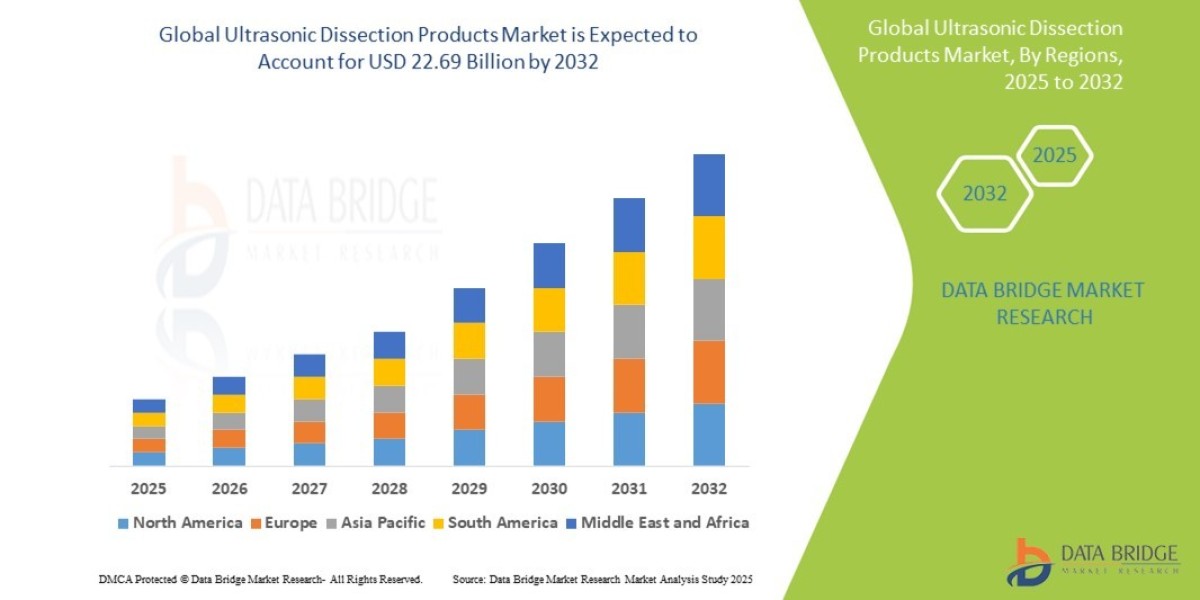Introduction: A New Era for Healthcare Marketing
Healthcare is no longer just about treating illness—it’s about creating a patient-centric ecosystem where communication, trust, and engagement are as important as clinical outcomes. Over the past decade, we’ve witnessed a seismic shift in how healthcare organizations connect with their audiences. What was once dominated by billboards, television ads, and health fairs is now being driven by AI-powered platforms, hyper-personalized campaigns, and sophisticated data analytics.
As consumers become more digitally savvy and healthcare competition intensifies, the need for targeted, relevant, and transparent communication has never been greater. According to a report by Accenture, 91% of patients say they are more likely to choose providers who offer personalized healthcare experiences. This means the future of healthcare marketing is not about reaching the most people—it’s about reaching the right people, in the right way, at the right time.
In this comprehensive guide, we’ll explore how AI, personalization, and data analytics are transforming Healthcare Marketing Services, what strategies work best, the challenges to watch out for, and how brands like Adomantra are leading the way.
1. The Changing Landscape of Healthcare Marketing
1.1 From Awareness to Engagement
The earliest form of healthcare marketing often relied on mass communication—hospital brochures, newspaper ads, radio jingles, and television commercials. While these methods created brand awareness, they lacked direct engagement. In today’s market, awareness alone isn’t enough—patients want meaningful interaction.
Consider this:
In 2005, only 5% of patients looked for health information online before seeing a doctor.
In 2024, that number skyrocketed to over 77%, with most patients consulting at least one digital channel before making a healthcare decision.
Key takeaway: The patient journey now begins long before they set foot in a clinic—it starts on Google, social media, or a telehealth platform. Marketing must adapt to this reality.
1.2 Digital Transformation in Healthcare
The rise of telemedicine, wearable devices, patient portals, and mobile health apps has changed the game. Not only can patients access their health records, but they also interact with healthcare providers in ways that generate rich datasets.
For marketers, this data is a goldmine:
Wearable fitness trackers provide real-time health metrics.
Patient portal interactions show patterns in appointment booking.
Social media conversations reveal trending health concerns.
Example: If a clinic notices increased searches for “flu symptoms” in a particular ZIP code, it can proactively launch a flu vaccination awareness campaign targeting that area.
2. The Role of AI in Healthcare Marketing
Artificial Intelligence is transforming marketing from reactive to proactive and predictive.
2.1 Predictive Analytics for Patient Needs
Predictive analytics uses machine learning to anticipate patient needs before they even arise.
Hospital example: AI can predict a spike in emergency room visits during allergy season based on pollen data and historical admission rates.
Clinic example: AI can identify patients due for preventive screenings and send automated reminders, improving compliance rates.
Why it matters: Proactive engagement builds trust, improves patient outcomes, and increases revenue.
2.2 Chatbots and Virtual Health Assistants
Chatbots are no longer basic FAQ tools—they are intelligent assistants capable of:
Answering medical queries within regulatory limits.
Assisting with insurance-related questions.
Scheduling, rescheduling, or canceling appointments.
Case Study: A healthcare network implemented an AI chatbot for appointment bookings and reduced call center workload by 40%, while patient satisfaction scores increased by 22%.
2.3 AI in Content Personalization
AI-powered content engines can tailor articles, videos, and email campaigns to patient preferences.
Example: A heart patient receives lifestyle tips about managing cholesterol, while a young parent gets reminders about child vaccination schedules.
This goes beyond engagement—it shows that the healthcare provider understands and values the patient’s unique needs.
3. Personalization: The Trust-Building Pillar
3.1 Why Personalization Matters in Healthcare
Healthcare decisions are deeply personal. Patients respond positively to providers who acknowledge their individual circumstances. Personalized healthcare marketing can:
Improve adherence to treatment plans.
Increase patient loyalty.
Drive higher conversion rates for elective treatments.
3.2 Personalization in Action
Tailored Appointment Reminders: Sending SMS reminders in a patient’s preferred language.
Customized Wellness Content: Offering diet plans based on medical history.
Targeted Seasonal Campaigns: Promoting travel vaccines before peak vacation seasons.
Example: A dermatology clinic sends skincare tips to acne-prone patients during summer months, resulting in a 35% increase in follow-up appointments.
3.3 Balancing Personalization with Privacy
While personalization can enhance patient engagement, marketers must respect patient confidentiality. Data must be handled in compliance with HIPAA in the U.S. and GDPR in the EU.
Best practices:
Obtain explicit patient consent before using personal data.
Anonymize datasets where possible.
Provide clear opt-out options.
4. Data Analytics: The Marketing GPS
Data analytics provides the insights needed to navigate the competitive healthcare marketing landscape.
4.1 Sources of Marketing Data
Electronic Health Records (EHRs): Track patient demographics and visit patterns.
Social Media Monitoring: Understand patient sentiment and trending concerns.
Web Analytics: Identify which services generate the most online interest.
Wearable Devices: Supply behavioral health data.
4.2 Data-Driven Campaign Improvements
Segmentation: Creating targeted campaigns for seniors, millennials, or parents.
Performance Metrics: Tracking email open rates, ad clicks, and appointment bookings.
Seasonal Trends: Aligning campaigns with common illnesses or local events.
4.3 Case Study: Hospital Readmission Reduction
A hospital used analytics to identify high-risk heart failure patients and implemented a personalized follow-up program. The result? A 19% drop in readmission rates and increased patient satisfaction.
5. Integrating AI, Personalization, and Analytics
The most successful healthcare marketing strategies combine AI, personalization, and analytics into one ecosystem.
Example Flow:
Data Collection: Wearable devices track patient health patterns.
AI Prediction: Machine learning identifies potential health risks.
Personalized Outreach: Patients receive tailored advice and checkup reminders.
Analytics Feedback: Campaign performance is measured and refined.
This integration ensures continuous improvement in patient engagement and marketing ROI.
6. Emerging Trends in Healthcare Marketing
Voice Search Optimization: Preparing for patients asking Alexa, “Find a cardiologist near me.”
Omnichannel Strategies: Maintaining a consistent message across email, social media, web, and in-clinic experiences.
Augmented Reality (AR) Education: Helping patients visualize surgical procedures.
Behavioral Segmentation: Using psychographic data for deeper personalization.
7. Ethical & Privacy Considerations
7.1 HIPAA & GDPR Compliance
Marketers must ensure that all campaigns respect data privacy regulations. Non-compliance can lead to heavy fines and loss of trust.
7.2 AI Transparency
Patients should know when AI is involved in decision-making or recommendations.
7.3 Ethical Data Use
Only collect the data you truly need. Over-collection increases risk without improving marketing performance.
8. Adomantra’s Role in the Future of Healthcare Marketing
Adomantra delivers cutting-edge Healthcare Marketing Services by blending creativity with data science. Their expertise lies in:
AI-driven predictive campaigns.
HIPAA-compliant personalization.
Robust analytics dashboards for healthcare providers.
With a patient-first approach, Adomantra ensures healthcare brands achieve both business growth and improved patient engagement.
15 FAQs on the Future of Healthcare Marketing
1. What is healthcare marketing, and why is it changing?
Healthcare marketing refers to the strategies and tactics used by healthcare providers, hospitals, clinics, pharmaceutical companies, and wellness brands to promote their services, build trust, and engage patients.
It is changing because patients are now active decision-makers—they research online, compare providers, and expect digital-first, personalized experiences. Traditional ads are no longer enough; AI, data analytics, and personalization are now central to success.
2. How is AI transforming healthcare marketing?
Artificial Intelligence enables marketers to analyze massive datasets in seconds, identify patient behavior patterns, and predict healthcare needs.
For example, AI can forecast which patients are likely to miss appointments, need preventive screenings, or seek specialty care. AI also powers chatbots, virtual health assistants, and personalized content delivery, making Healthcare Marketing Services more efficient and patient-focused.
3. Why is personalization so critical in healthcare marketing?
Healthcare is deeply personal—patients want communication that reflects their individual needs, conditions, and preferences. Personalization increases engagement, trust, and treatment adherence.
Instead of sending the same newsletter to all patients, a personalized campaign might send heart health tips to cardiac patients and seasonal allergy updates to those prone to allergies. This relevance boosts response rates and loyalty.
4. What role does data analytics play in healthcare marketing?
Data analytics turns raw patient and market data into actionable insights.
Healthcare organizations use analytics to segment audiences, track campaign performance, and identify service demand trends. For instance, a clinic can analyze patient portal data to see which services are most booked and create targeted promotions.
Analytics also enables continuous improvement by measuring ROI and refining strategies.
5. How can AI-powered predictive analytics benefit healthcare providers?
Predictive analytics helps healthcare providers anticipate patient needs before they arise.
For example:
Identifying patients at high risk of diabetes and sending them preventive diet plans.
Forecasting seasonal spikes in illnesses like flu and preparing targeted awareness campaigns.
This proactive approach improves patient outcomes and optimizes marketing spend.
6. What are Healthcare Marketing Services, and how do they work?
Healthcare Marketing Services are specialized strategies and tools designed to promote healthcare providers and engage patients ethically and effectively.
They typically include:
Digital advertising campaigns
Social media management
SEO for healthcare websites
AI-powered chatbots and automation
HIPAA-compliant email marketing
These services combine technology, compliance, and empathy to deliver results.
7. How can small clinics or solo practitioners benefit from AI marketing tools?
Small healthcare providers often assume AI tools are too expensive—but today, there are affordable, cloud-based AI platforms that scale to their needs.
A solo dentist, for example, could use AI to automatically send appointment reminders, predict cancellations, and suggest follow-up care.
Even small practices can compete with larger institutions by leveraging AI for personalized engagement.
8. Are there privacy concerns with AI and personalization in healthcare?
Yes—privacy is a major concern in healthcare marketing.
AI systems often handle sensitive health data, which must comply with regulations such as HIPAA (U.S.) and GDPR (Europe).
To stay compliant, organizations must:
Obtain patient consent before using data
Store data securely with encryption
Limit data access to authorized personnel
Transparency in how data is collected and used builds patient trust.
9. What’s the difference between omnichannel and multichannel marketing in healthcare?
Multichannel marketing uses multiple platforms (email, social media, print) but may lack integration.
Omnichannel marketing delivers a seamless and consistent patient experience across all platforms, with data shared between channels.
Example: A patient sees a Facebook ad for a vaccination drive, clicks to the website to book an appointment, and receives a personalized SMS reminder—all with consistent messaging.
10. How do wearable devices impact healthcare marketing?
Wearables like Fitbit, Apple Watch, and glucose monitors collect real-time health data that can guide personalized campaigns.
For instance, a fitness tracker may detect reduced activity levels, prompting a health app to send motivational content or promote relevant wellness programs.
With patient consent, this data can inform preventive healthcare marketing strategies.
11. Can AI improve patient education through marketing?
Absolutely. AI can tailor educational materials—articles, videos, and interactive tools—based on patient conditions and learning preferences.
For example, a patient with hypertension might receive a 3-minute video on low-sodium diets, while another might get an infographic on monitoring blood pressure.
This personalized education improves health literacy and engagement.
12. What trends will dominate healthcare marketing in the next 5 years?
Voice search optimization for smart speakers and assistants.
AR/VR tools for patient education and procedure simulation.
Behavioral segmentation using psychographic data.
Predictive healthcare journeys mapping patient decision-making stages.
Integration of mental health marketing into mainstream campaigns.
13. How does social media fit into the future of healthcare marketing?
Social media is becoming a vital patient engagement tool. Hospitals use Instagram to share behind-the-scenes content, LinkedIn for thought leadership, and TikTok for quick health tips.
Future trends include AI-powered social listening to detect emerging health concerns and create timely campaigns that address them.
14. How can Healthcare Marketing Services improve patient retention?
Retention is about keeping patients engaged between visits. Services like personalized follow-ups, loyalty programs for preventive care, and condition-specific newsletters can keep patients connected.
For example, a pediatric clinic might send seasonal parenting tips, ensuring parents remember the clinic for future visits.
15. How can Adomantra help healthcare brands prepare for the future?
Adomantra combines creativity with AI, personalization, and data analytics to deliver next-generation Healthcare Marketing Services.
They specialize in:
Predictive patient engagement campaigns
HIPAA-compliant personalization
Multi-platform analytics tracking
By staying ahead of tech and compliance trends, Adomantra helps healthcare brands achieve higher engagement, better patient outcomes, and measurable ROI.
Conclusion: Where We’re Headed
The healthcare marketing of tomorrow will be smart, ethical, and deeply personalized. AI will anticipate patient needs, personalization will foster trust, and analytics will keep strategies sharp.
Those who embrace this transformation—especially with expert partners like Adomantra—will not only succeed in business terms but will also play a vital role in improving global health outcomes.








